
-
 Scandic Trust Group strengthens sales network with First Idea Consultant
Scandic Trust Group strengthens sales network with First Idea Consultant
-
Deadly Typhoon Kalmaegi ravages Vietnam, Philippines

-
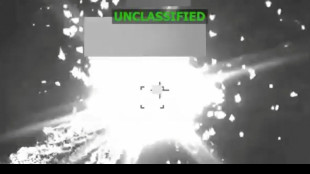 Three killed in new US strike on alleged drug boat, toll at 70
Three killed in new US strike on alleged drug boat, toll at 70
-
Chinese microdrama creators turn to AI despite job loss concerns

-
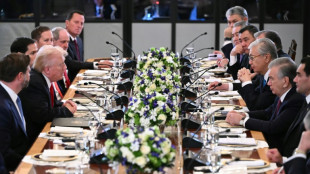 Trump hails Central Asia's 'unbelievable potential' at summit
Trump hails Central Asia's 'unbelievable potential' at summit
-
Kolya, the Ukrainian teen preparing for frontline battle

-
 Big leap in quest to get to bottom of climate ice mystery
Big leap in quest to get to bottom of climate ice mystery
-
Markets drop as valuations and US jobs, rates spook investors

-
 'Soap opera on cocaine': how vertical dramas flipped Hollywood
'Soap opera on cocaine': how vertical dramas flipped Hollywood
-
Under pressure? EU states on edge over migrant burden-sharing

-
 US influencers falsely associate Mamdani with extremist group
US influencers falsely associate Mamdani with extremist group
-
Hungary's Orban to meet Trump in face of Russia oil sanctions

-
 US facing travel chaos as flights cut due to govt shutdown
US facing travel chaos as flights cut due to govt shutdown
-
Liverpool and Man City renew rivalry as they try to narrow Arsenal gap
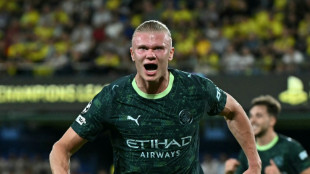
-
 UK's Andrew asked to testify over Epstein as he formally loses titles
UK's Andrew asked to testify over Epstein as he formally loses titles
-
Local hero: 'DC sandwich guy' found not guilty of assaulting officer with sub
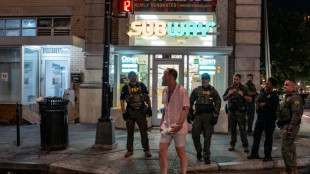
-
 Dead famous: Paris puts heritage graves up for grabs
Dead famous: Paris puts heritage graves up for grabs
-
UK grandmother on Indonesia death row flies home

-
 Former NFL star Brown extradited from Dubai to face trial in shooting - police
Former NFL star Brown extradited from Dubai to face trial in shooting - police
-
Chile presidential hopeful vows to expel 'criminal' migrants to El Salvador

-
 Trump event paused in Oval Office when guest faints
Trump event paused in Oval Office when guest faints
-
NFL Colts add Sauce to recipe while Patriots confront Baker

-
 Home owned by Miami Heat coach Spoelstra damaged by fire
Home owned by Miami Heat coach Spoelstra damaged by fire
-
Tesla shareholders approve Musk's $1 trillion pay package

-
 World leaders launch fund to save forests, get first $5 bn
World leaders launch fund to save forests, get first $5 bn
-
Villa edge Maccabi Tel Aviv in fraught Europa League match

-
 Protests as Villa beat Maccabi Tel Aviv under tight security
Protests as Villa beat Maccabi Tel Aviv under tight security
-
US Supreme Court backs Trump admin's passport gender policy

-
 Japan boss Jones backs Farrell to revive Ireland's fortunes
Japan boss Jones backs Farrell to revive Ireland's fortunes
-
MLB Padres name former reliever Stammen new manager
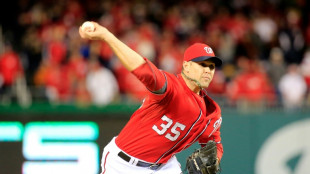
-
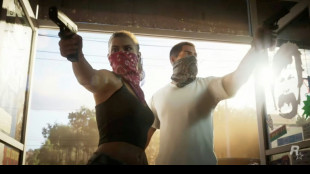 'Grand Theft Auto VI' video game delayed again until Nov. 2026
'Grand Theft Auto VI' video game delayed again until Nov. 2026
-
Martino returns as head coach of MLS Atlanta United

-
 Hamilton dismisses Ferrari exit claims
Hamilton dismisses Ferrari exit claims
-
Musetti keeps ATP Finals hopes alive, joins Djokovic in Athens semis

-
 England boss Borthwick wants 'brilliant' Marcus Smith to shine against Fiji
England boss Borthwick wants 'brilliant' Marcus Smith to shine against Fiji
-
Piastri says he is confident he can recover and win drivers' title

-
 Verstappen admits he may need a bit of 'luck' to haul in rivals in title race
Verstappen admits he may need a bit of 'luck' to haul in rivals in title race
-
Kazakhstan to join Abraham Accords as Trump pushes Mideast peace

-
 'Moral failure': Leaders seek to rally world at Amazon climate talks
'Moral failure': Leaders seek to rally world at Amazon climate talks
-
UN Security Council votes to lift sanctions on Syrian president
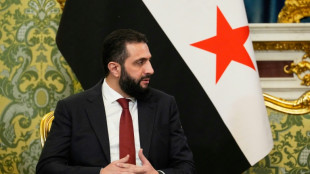
-
 Democratic giant, trailblazer and Trump foe Nancy Pelosi to retire
Democratic giant, trailblazer and Trump foe Nancy Pelosi to retire
-
World leaders ditch ties at sweaty climate summit
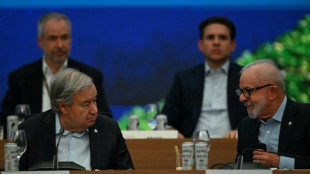
-
 Dallas Cowboys' Marshawn Kneeland dies at 24
Dallas Cowboys' Marshawn Kneeland dies at 24
-
Rally outside Rockstar against GTA studio's 'union busting'

-
 McLaren boss says would rather lose title than issue team orders
McLaren boss says would rather lose title than issue team orders
-
Sabalenka, top WTA stars urge Slams to revive 'stalled' negotiations

-
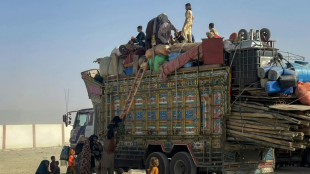 5 killed in Afghan-Pakistan border fire despite peace talks: official
5 killed in Afghan-Pakistan border fire despite peace talks: official
-
Trump unveils deals to lower costs of some weight-loss drugs

-
 Controversial Canadian ostrich cull order will go ahead
Controversial Canadian ostrich cull order will go ahead
-
Mexico's Sheinbaum to boost reporting of sexual abuse after being groped


In poor areas of Peru's capital, running water is a dream
In the bone-dry hills overlooking Lima, the luxury of running water is just a dream for thousands of Peruvians who get theirs delivered by tanker truck.
Peru's capital, home to more than 10 million people, is also the world's second largest city located in a desert, after Cairo.
It has the Pacific Ocean on one side, the Andes on the other and three rivers running through it, plus a water table. But rain is scarce.
More than 635,000 people in Lima lack running water, says the National Institute of Statistics and Computer Science, and many of them live in informal settlements high above the city, in spots not reached by the water and sewer lines.
Blue tanker trucks bring water for free once a week, sometimes less, to parts of San Juan de Miraflores south of the city, and leave it in large drums placed along its dusty streets.
And these containers are anything but hygienic.
"We get stomach cramps and migraines. There are worms in the bottom of the tank," said Catalina Naupa, a 59-year-old resident of San Juan de Miraflores.
In winter sometimes the trucks do not come at all because the streets become so muddy they are unnavigable, said Naupa, who washes her clothes only once a week or even every two weeks to conserve water.
Nicolas Reyes, who works for the city's water utility Sedapal, says it brings in a cubic meter (260 gallons) of water per family per week.
That comes out to about 30 liters (eight gallons) of water per person each day -- far short of the minimum 50-100 liters that the United Nations says people should have access to.
Year after year, Sedapal fears having to ration water as the rainy season comes and it hopes Peru's reservoirs fill, said Jeremy Robert of the Institute for Development Research, in France.
- 'Another world'-
"Climate change is going to affect water levels in the mountains and reduce the flow of rivers," said Antonio Ioris, a professor of geography at Cardiff University in Wales.
But he said dwindling water reserves are not the main problem, insisting that poor people's tenuous access to water is very low on policymakers' list of priorities.
"The situation on the outskirts of Lima stems not only from a lack of urban planning but also from problems in rural areas that force people to migrate to the city," said Ioris, who specializes in the link between population and environmental issues in Latin America.
Along dirt roads in some areas of San Juan de Miraflores, concrete staircases lead to spots that are even harder to access and cannot be reached by the trucks that bring in water.
So these people get by the best they can, and on average pay six times what people connected to the utility grid pay for water, the government says.
In one hilltop area of San Juan de Miraflores, a water drum blocks the last step of a staircase heading up toward another world.
Up on the peak, a two-meter high, 10-kilometer long (two-yard high, six-mile long) concrete barrier -- people call it the "wall of shame" -- separates San Juan de Miraflores from a rich area on the other side. The idea is to keep poor people out.
Through cracks in the wall one can see the lush vegetation of Santiago de Surco, a Lima neighborhood with one of the highest rates of water consumption -- 200 liters per day per person, according to Sedapal.
There on the other side, thick green grass is fed with drinking water and people rest under leafy trees.
"Surco seems like another world," said Cristel Mejia, who runs a soup kitchen on the poor side of the wall.
L.Harper--AMWN

